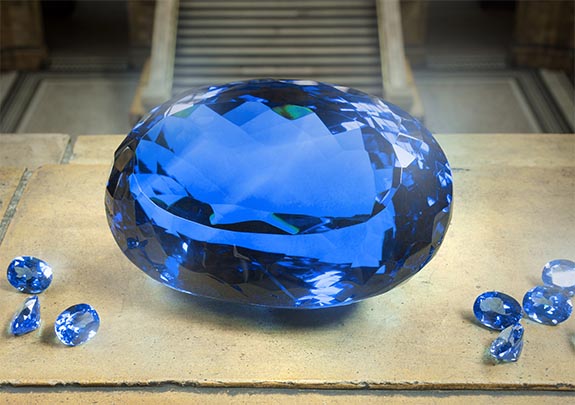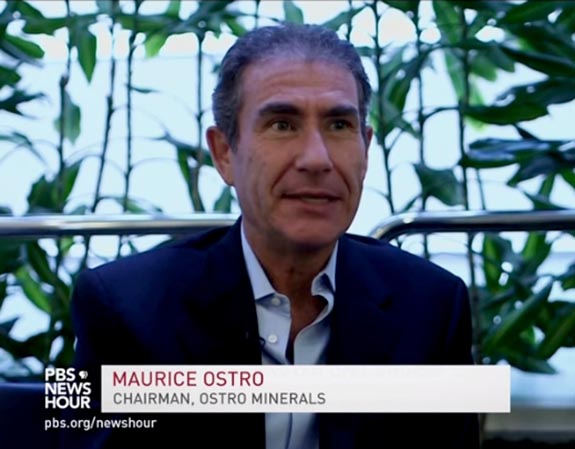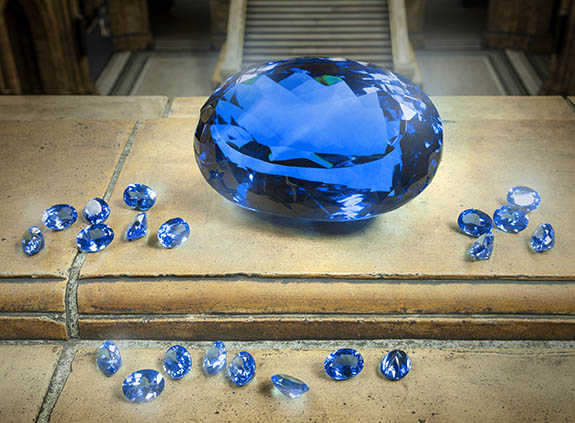The Ostro Stone — the world's largest faceted intense blue topaz at 9,381 carats — made its public debut at London’s Natural History Museum yesterday.

Unearthed by gemstone pioneer Max Ostro in the Amazon rainforest in 1986, the flawless gem was expertly cut and polished into a oval shape and then locked away in a vault for three decades.
After Max's death in 2010, his son Maurice decided it was time for the public to enjoy the gemstone's magnificence. Recently, he gave the gem to London's famed Natural History Museum on permanent loan.

“Collecting beautiful colored gems was my father’s passion," said Maurice Ostro, the chairman of Ostro Minerals, "My mission is to leverage his remarkable legacy in a way that would make him proud. We are delighted that the finest of his gemstones will now be part of the collection at the Natural History Museum, [which shares] our passion for exceptional stones.”
Max Ostro founded Ostro Minerals in 1960, and his company grew to be a leading producer of blue topaz. The senior Ostro is credited with refining the nomenclature used to describe the various colors of topaz. For instance, he coined the term “London Blue” and “Swiss Blue.”

The PBS NewsHour caught up with Maurice during a photo shoot leading up to The Ostro Stone's debut.

"Having tried to hold it for photography, I can tell you it is very heavy," Ostro told PBS NewsHour.
In fact, the gem is nearly six inches long, 4.5 inches wide and weighs a surprising 4.1 pounds.
Topaz comes is a wide variety of hues and saturations, but The Ostro Stone is in a class by itself.
"What is amazing about this stone is not just its size," Ostro told PBS NewsHour. "It’s its quality. The color, the intensity of the blue and the clarity of the stone are what makes it so exceptionally rare."

The museum announced that it would boost security to ensure the gemstone's protection. London's Natural History Museum welcomes more than five million visitors a year and is a world-leading science research center.
Credits: Gem images courtesy of London’s Natural History Museum. NewsHour screen captures via PBS.org.
No comments:
Post a Comment